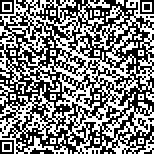| 本文已被:浏览 1780次 下载 1173次 |

码上扫一扫! |
|
|
| 2018年6月渤海大型水母分布特征 |
|
王朋鹏1,2,3,4, 张芳1,2,4, 孙松1,2,3,4,5, 杨涛6
|
|
1.中国科学院海洋研究所 海洋生态与环境科学重点实验室 青岛 266071;2.青岛海洋科学与技术试点国家实验室 海洋生态与环境科学功能实验室 青岛 266071;3.中国科学院大学 北京 100049;4.中国科学院海洋大科学研究中心 青岛 266071;5.中国科学院海洋研究所 山东胶州湾海洋生态系统国家野外科学观测研究站 青岛 266071;6.中国水产科学研究院黄海水产研究所 山东省渔业资源与生态环境重点实验室 青岛 266071
|
|
| 摘要: |
| 2018年6月使用渔业底拖网采样,对渤海大型水母进行了全面调查,调查船舶为"中渔科102"渔业科考船。本研究分析了渤海大型水母的种类组成、渔获密度与伞径大小,并对其源地进行了探讨。结果表明:本次调查共采集到海月水母、沙海蜇、海蜇、多管水母四种大型水母,其中海蜇、多管水母数量较少,各采集到一只。海月水母在渤海三湾均有分布,各海区伞径大小无显著差异且多为幼体(<10cm),密度高值区出现在渤海湾东南侧海域,可达38-221.21ind./(net·h),辽东湾海月水母出现于湾南,密度<5ind./(net·h),湾北未见;作者推测,海月水母在渤海沿岸可能存在多个源头,诸如:莱州湾与渤海湾交界近岸海域、河北近岸、辽东湾大连近岸以及北部近岸。沙海蜇在渤海分布较广,辽东湾为密度高值区,均值为(35.32±21.64)ind./(net·h),但伞径较小,均值为(12.15±6.52)cm;与此相对,渤海湾与莱州湾外侧海域沙海蜇密度虽小[<20ind./(net·h)],但伞径要显著大于辽东湾,最大伞径均值可达(33.86±7.40)cm;作者推测,沙海蜇在渤海海域发源地主要集中于辽东湾近岸,渤海湾与莱州湾,外海出现的沙海蜇可能源于辽东湾,随海流运输至此。海月水母、沙海蜇在渤海发生时间要晚于黄、东海。本研究结果可为深入分析渤海大型水母的种群动态变化、暴发机理提供基础。 |
| 关键词: 海月水母 沙海蜇 水母暴发 辽东湾 莱州湾 发源地 |
| DOI:10.11693/hyhz20190500085 |
| 分类号:Q958 |
| 基金项目:国家重点研发计划,2017YFC1404405号;山东省支持青岛海洋科学与技术试点国家实验室重大科技专项,2018SDKJ0504-3号;中国科学院战略性先导科技专项(A类)资助,XDA11060201号,XDA11060203号;鳌山科技创新计划项目,2016ASKJ02-2号。 |
附件 |
|
| DISTRIBUTION OF GIANT JELLYFISH IN THE BOHAI SEA IN JUNE 2018 |
|
WANG Peng-Peng1,2,3,4, ZHANG Fang1,2,4, SUN Song1,2,3,4,5, YANG Tao6
|
|
1.Key Laboratory of Marine Ecology and Environmental Sciences, Institute of Oceanology, Chinese Academy of Sciences, Qingdao 266071, China;2.Laboratory of Marine Ecology and Environmental Sciences, Pilot National Laboratory for Marine Science and Technology(Qingdao), Qingdao 266071, China;3.University of Chinese Academy of Sciences, Beijing 100049, China;4.Center for Ocean Mega-Science, Chinese Academy of Sciences, Qingdao 266071, China;5.Jiaozhou Bay Marine Ecosystem Research Station, Institute of Oceanology, Chinese Academy of Sciences, Qingdao 266071, China;6.Key Laboratory for Fishery Resources and Eco-Environment, Yellow Sea Fisheries Research Institute, Chinese Academy of Fishery Sciences, Qingdao 266071, China
|
| Abstract: |
| To explore the species compositions and distributions of large jellyfishes in the Bohai Sea, a comprehensive fishery survey was designed and conducted onboard R/V Zhongyuke in June 2018. Jellyfish were sampled using a bottom trawl at 47 stations. The dominant large jellyfish species, their diameter size, and biomass were recorded. The results show that the sources of jellyfish included Aurelia coerulea, Nemopilema nomurai, Rhopilema esculentum, and Aequorea sp., of which only one individual of R. esculentum and Aequorea sp. was collected. A. coerulea occurred frequently in the Bohai Sea, but the diameters were mostly <10cm in all sampling stations. The peak abundance of A. coerulea was in the southeast of Bohai Bay[38-221.21ind./(net·h)]. A. coerulea in the Liaodong Bay occurred mainly in the south of the bay. We speculated that there may be multiple sources of A. coerulea in Bohai Sea, e.g., Laizhou Bay and the border coastal water of Bohai Bay, the offshore regions of Hebei Province and Dalian, and the northern Liaodong Bay. The peak abundance of N. nomurai was found in the Liaodong Bay[(35.32±21.64)ind./(net·h)], while the mean diameter was only (12.15±6.52)cm. In contrast, although the abundance of N. nomurai between Bohai Bay and Laizhou Bay was <20ind./net·h, the diameter was significantly larger than that in the Liaodong Bay, and the maximum diameter was (33.86±7.40)cm. A. coerulea and N. nomurai in the Bohai Sea occurred later than in the Yellow Sea and East China Sea. |
| Key words: Aurelia coerulea Nemopilema nomurai jellyfish bloom Liaodong Bay Laizhou Bay source of jellyfish bloom |
